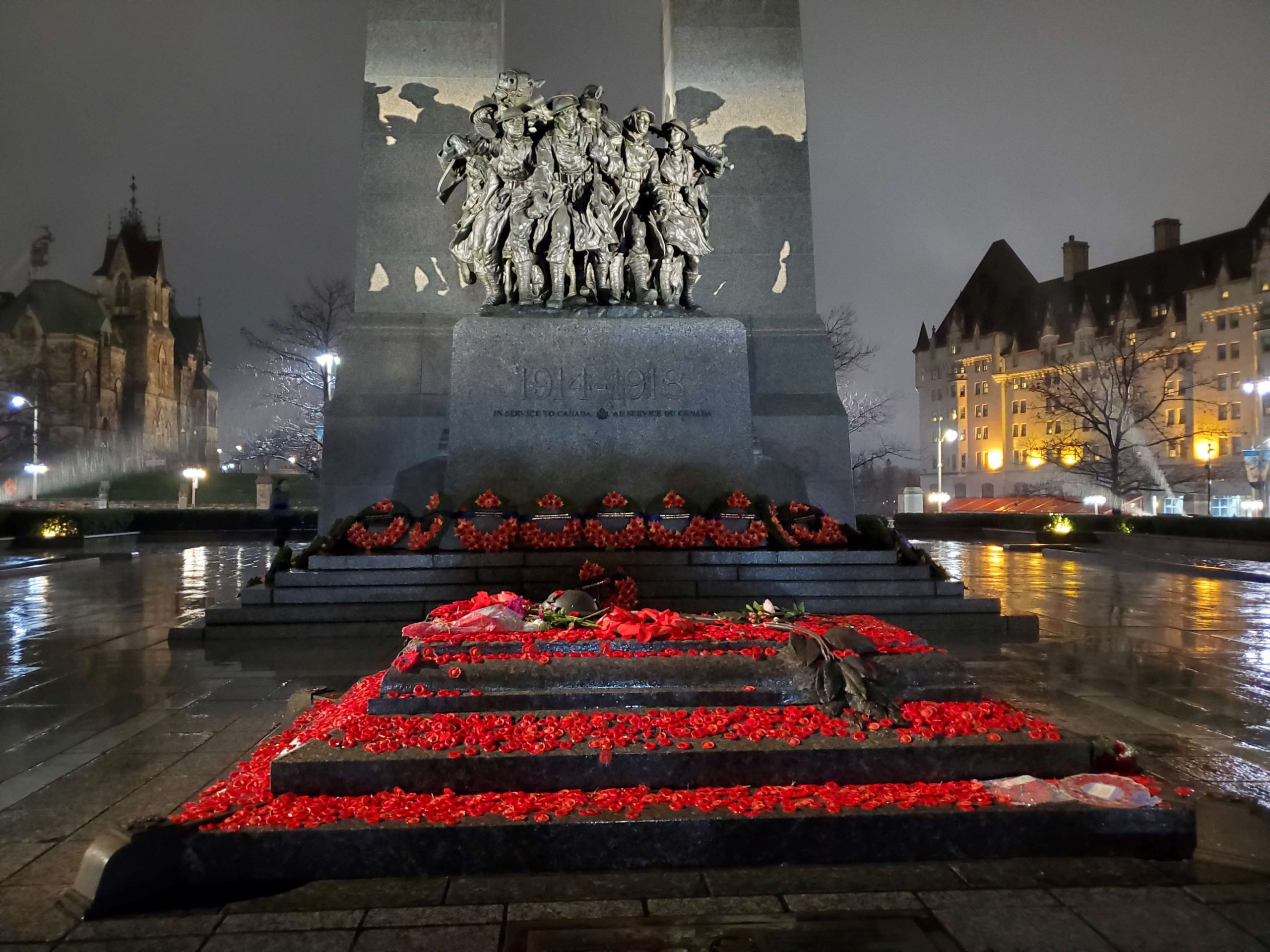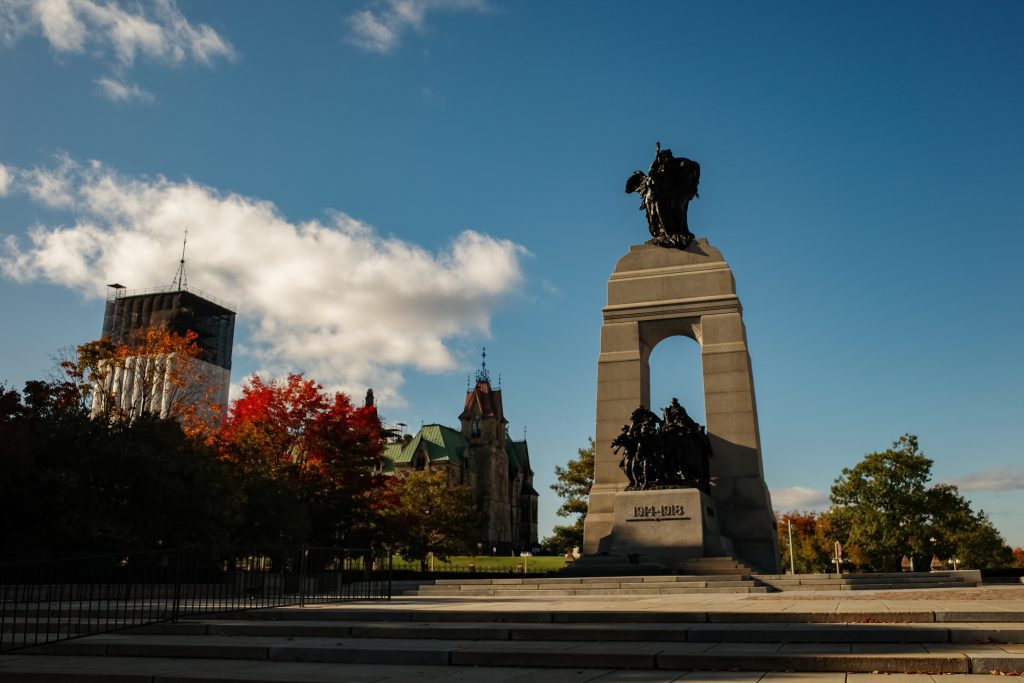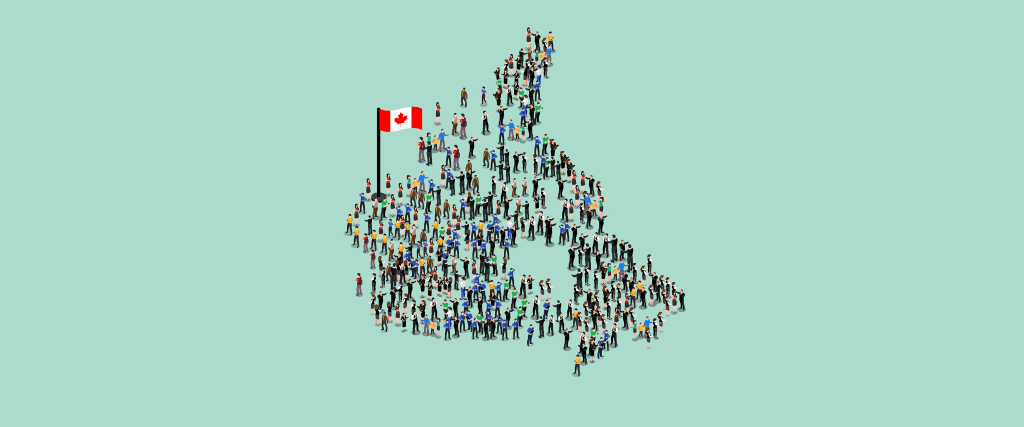- 2024-11-10
- Statement
The simple poppy: A reminder of the universality of sacrifice

The Tomb of the Unknown Soldier. Photo credit: Master Warrant Officer (Ret’d) Floyd Powder
OTTAWA, ON — November 10, 2024 — In Flanders Fields by Canadian physician Lieutenant-Colonel John McCrae may be the most widely known poem that honours the lives of those who have served. It continues to be heard in Remembrance Day services around the world and a source of inspiration in countless ways for the duty we as the living have to honour the sacrifice of the fallen who gave their lives in war.
There is a lesser-known poem also inspired by this piece that has its own origin story of how the symbol of the poppy came to be an enduring sign of remembrance.
Moina Michael was an American woman so moved hearing this poem that she wrote a response called We Shall Keep the Faith and made a personal pledge vowing to wear a red poppy as remembrance. She began producing artificial poppies and then used funds raised from this initiative to support ex-servicemen returning from the First World War. Her initiative caught the eye of and was promoted by a Frenchwoman named Anna E. Guérin, adopted by the Royal British Legion in 1921 for the first-ever Poppy Appeal that November 11, and then by Canada, Australia and New Zealand. As a result, the poppy has been a symbol of remembrance worldwide for over 100 years. Think about the impact of that as we see the poppy funds today!
The second stanza of her response is particularly beautiful and in my mind instructive, more than a century after she penned it on the back of a used envelope:
We cherish too, the poppy red
That grows on fields where valor led
It seems to signal to the skies
That blood of heroes never dies,
As I don my own poppy this year, I think about what a difference one person can make in continuing to honour what can feel at times so very far removed from our present-day lives, be that McCrae’s, Michael’s or Guérin’s contributions to the simple poppy coming to be the ongoing symbol of remembrance around the world, or what perhaps we can contribute in modern times individually. Because, truthfully, the reality is it is not that far removed at all if we ask ourselves a timeless question: “In remembrance, who might be the forgotten?”
Here in Canada we know that more than 118,000 brave soldiers did not return home to their loved ones throughout our short history of a nation. Canada’s eight Books of Remembrance, which record the names of every Canadian who died in service to our country, are currently displayed at Parliament Hill’s Visitor Welcome Centre, in the Room of Remembrance.
Something we have recently become aware of is that not all who have served find themselves remembered in death. For instance, burial sites and grave markers. This may simply be because of a lack of awareness of available programs or perhaps there were many years between their service and time of passing, or even that they hadn’t considered themselves a Veteran by definition. Some have simply never been identified. It is important that education around this happens so all who have served are recognized with headstones honouring their service, including those who historically have served. There is a program through Veterans Affairs Canada and the Commonwealth War Graves Commission that ensures the maintenance of more than 300,000 markers and grave sites of Canadian Armed Forces members here and around the world, including those whose deaths were not directly attributed to service. It is particularly meaningful to know this exists where some might have fallen into disrepair or where no living relative remain to continue to provide for the upkeep, thus ensuring these grave sites are maintained throughout time.
Whether they lie marked in Flanders, Bény-sur-Mer, Beechwood, or unmarked throughout the world, these are places where valour lies. These are heroes. We must remember all and their lives and their service must be honoured.
While there is an official count of the war dead, there is growing recognition of a number not accounted for — those lost to their psychological wounds incurred as a result of service. As conversations become more open and honest about mental health and how this has been a real impact of service, when we lose a former serviceperson (or currently serving member) to suicide, the question many grapple with now is: How do we officially honour those lives? It is welcome to see this year’s Memorial Cross Mother (also known as the Silver Cross Mother) recognized for her loss of two sons to the impacts of posttraumatic stress disorder.
At the Atlas Institute for Veterans and Families, the feedback we hear from our community is that mental health injuries are no different than the physical injuries which our Veterans incur and should be treated as such. The impact is equal and they are no less heroes than those who died in uniform. As such, it is imperative to honour them in equal measure of remembrance.
As we expand our remembrance practices to include all types of injuries, we have an opportunity to become leaders in advocating for comprehensive recognition of Veterans’ sacrifices.
Beyond that, our responsibility as Canadians does not end on Remembrance Day — it extends into everyday acts of awareness, support and education around the complex realities of military service. There is no differentiation. We can make that statement unequivocally and stand on November 11 with our Veterans and Family members in honouring their loved ones who died both in service and post-service as a result of their injuries sustained.
Perhaps, inspired by the enduring symbol of the poppy and the difference one can make, we can move forward with a renewed understanding: service is service, the blood of all heroes never dies and our remembrance of all should be equally enduring regardless of the nature of their wounds.
— Fardous Hosseiny, President and CEO, Atlas Institute for Veterans and Families
Visit our Veterans’ Week 2024 page to learn more about the different ways to commemorate.

